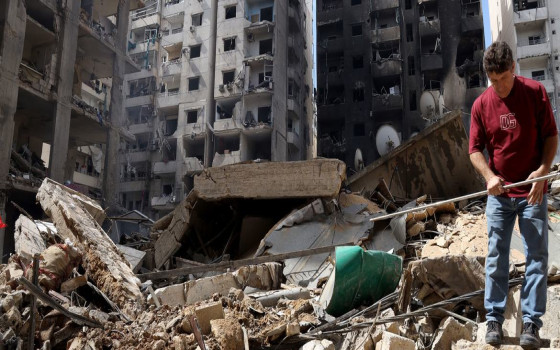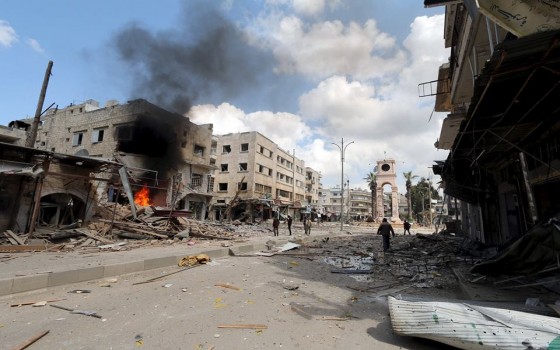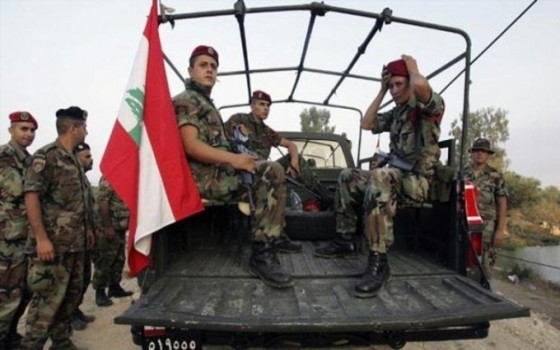
Israeli shelling continues, new casualties reported in Palestinian territories...and the main crossing for displaced people from Lebanon to Syria is closed

- Europe and Arabs
- Saturday , 5 October 2024 9:23 AM GMT
Gaza - Beirut: Europe and the Arabs
Five Palestinians were martyred and others were injured today, Saturday, as a result of the Israeli occupation's shelling of the town of Beit Hanoun, north of the Gaza Strip.
The Palestinian News Agency (Wafa) reported, quoting local sources, that five Palestinians were martyred and others were injured as a result of being exposed to the occupation's artillery shelling.
In an unofficial tally, the number of martyrs since the beginning of the occupation's aggression on the Gaza Strip on October 7 has risen to 41,802 martyrs, most of whom are children and women, while the number of injured has reached more than 96,000.
In the occupied West Bank, the Israeli occupation forces continue to close the entrance to the town of Idhna, west of Hebron, for the 35th day today.
Local sources reported that the occupation forces tightened their military measures in the town and kept the main entrance closed with an iron gate for the 35th consecutive day; which forced citizens to walk to reach their places of work.
The same sources added that the alternative roads to reach the city of Hebron are long and rugged, and include military checkpoints at the entrances to the villages and towns; What impedes the movement of Palestinians.
It is worth noting that the iron gates embitter the lives of Palestinians, hinder their movements, and constitute points of arrest and abuse. This morning, the Israeli occupation forces set up a military checkpoint in the middle of the town of Hizma, northeast of Jerusalem. The occupation forces stopped the vehicles at the checkpoint they set up in the middle of the town, and checked the identities of their passengers; which led to obstructing their movement, and causing a stifling crisis in the area.
According to the United Nations news bulletin, a copy of which we received, the United Nations Human Rights Office strongly condemned the airstrike carried out by the Israeli security forces on a residential building in the Tulkarm camp in the occupied West Bank, on the evening of October 3, which led to the killing of at least 18 Palestinians, including at least 3 children and 2 women.
A statement issued by the office said that the Israeli air force bombed a 3-storey residential building that includes a café on the ground floor in a crowded area in the Tulkarm camp. The statement indicated that no clashes or confrontations broke out at the site.
The UN Human Rights Office added that the airstrike completely destroyed the targeted building and damaged nearby homes. It said that more dead people could be under the rubble, and noted the difficulty of recovery and identification in light of the magnitude of the bombing.
The UN Human Rights Office noted that the Israeli army said it had killed a local Hamas leader, who was allegedly planning to carry out attacks on Israeli settlements, including “in the immediate time frame,” as well as other “important terrorists.”
According to information gathered by the UN Human Rights Office, most of those killed were not armed or wanted by Israeli security forces and were killed in their homes or while passing in the street. The office said that among the dead were an entire family of five, including two children, who lived in the targeted building.
The UN Office for the Coordination of Humanitarian Affairs reported that it visited the site of an attack that took place on Tuesday night in the Ma’an area, east of Khan Younis, on Wednesday. It said that ambulances trying to evacuate the wounded could not reach them due to the ongoing incursion. The UN office said that after hours, paramedics were finally able to reach the area, but their bulldozer ran out of fuel while pulling bodies from under the rubble. The Office for the Coordination of Humanitarian Affairs stressed that emergency teams in Gaza need to be able to save lives.
He added that doing so requires providing more fuel and equipment, but most importantly, relief workers need safe and unhindered access to the areas they need.
In another development, the United Nations Relief and Works Agency for Palestine Refugees (UNRWA) reported that three of its schools were bombed in the past two days, where some 20,000 people were taking shelter.
The agency said that reports indicated that more than 20 people were killed.
It explained that since the beginning of the war, more than 140 of its schools have been attacked, warning that schools are not a target and cannot be used for any military purpose by anyone.
A new assessment by UNICEF and its humanitarian partners this week found that at least 87 per cent of school buildings in Gaza have been directly hit or damaged since October last year, including a third of UNRWA schools.
The World Health Organization said it had asked Israel to begin the second phase of its polio vaccination campaign in Gaza on 14 October.
The organization expects the effort to conclude on 29 October, noting that discussions with the Israeli authorities, as well as with the Ministry of Health and partners on the ground, are ongoing.
In Lebanon, the UN refugee agency confirmed that two Israeli airstrikes targeted the road in the buffer zone at the Masnaa border crossing between Lebanon and Syria, effectively cutting off the main route people were using to flee the violence out of Lebanon.
According to Lebanese authorities, 235,000 people crossed the border between the two countries, including 82,000 Lebanese and 152,000 Syrians, between 21 September and yesterday, 3 October. In addition, some 50,000 people have left Beirut airport, including 10,000 Syrians, and 1,060 have also fled by sea. Speaking to reporters in Geneva from the Jordanian capital Amman, UNHCR’s Senior Communications Advisor for the Middle East and North Africa, Rula Amin, described the scene at the Masnaa crossing, saying the road had been hit twice, creating a “huge crater”. She added that people this morning were “so desperate to flee Lebanon that they were actually walking along that destroyed road”.
Ms. Amin noted that although the Masnaa crossing is out of service to traffic, the other three border crossings are “open and functioning”. She said that UNHCR is working alongside the Syrian Arab Red Crescent and other humanitarian partners at the four crossings to support people crossing into Syria, who have so far been mostly Lebanese and Syrians but also include some Palestinian refugees, Iraqi nationals and migrants of other nationalities. In addition to basic relief items, she said, UNHCR is providing legal assistance to Syrian returnees. “Many people fled their homes without any identification papers. They have been away from Syria for years. Many of them do not have birth certificates or other documents, so we are helping on that front as well,” she explained. Rula Amin said that around 60 per cent of those arriving in Syria are children and teenagers, some of whom are unaccompanied. She added that families arrive “physically and psychologically exhausted and in dire need of support, some of whom require urgent medical care”.












No Comments Found